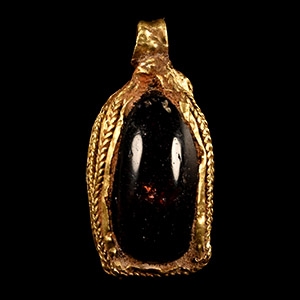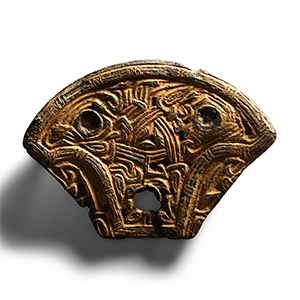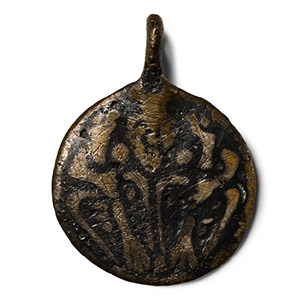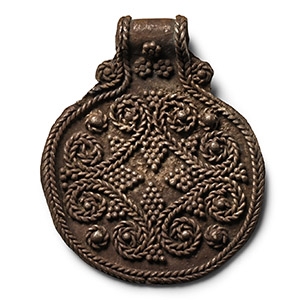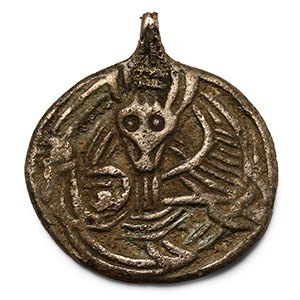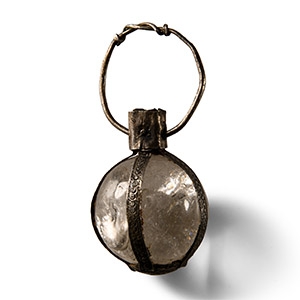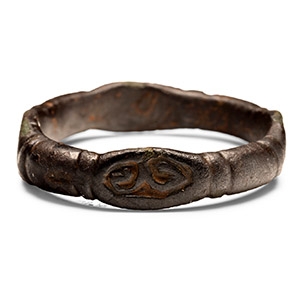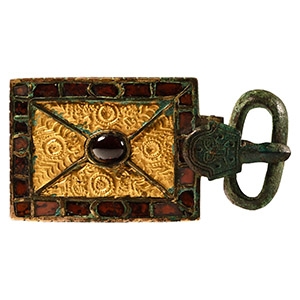Home > Auctions > 4 June - 8 June 2024
Ancient Art, Antiquities, Natural History & Coins
Auction Highlights:
with Christies, sale 3498, 11 December 2014, lot 291.
Accompanied by an original Christie's lot tag.
Cf. Chadour, A.B., Rings. The Alice and Louis Koch Collection, volume I, Leeds, 1994, item 487, for type.
From the private collection of a London gentleman, from his grandfather's collection formed before the early 1970s.
Cf. MacGregor, A. & Bolick, E., A Summary Catalogue of the Anglo-Saxon Collections (Non-Ferrous Metals), Oxford, 1993, item 24.11, for similar.
Found Peterborough, Cambridgeshire, UK.
From an East Anglian private collection.
Cf. Pollington, S., Kerr, L. & Hammond, B., Wayland's Work: Anglo-Saxon Art, Myth & Material Culture from the 4th to 7th century, Ely, 2010, pl.51, for type.
Private collection formed in Europe in the 1980s.
Westminster collection, central London, UK.
Cf. Kershaw, J.F., Viking Identities. Scandinavian Jewellery in England, Oxford, 2013, pl.5, for type.
Private collection formed in Europe in the 1980s.
Westminster collection, central London, UK.
Cf. Hammond, B. M., British Artefacts Volume 2 - Middle Saxon and Viking, p.57, item 1.5.3-f; Korshyn, V.E., Yazcheskye Priveski Drevnei Rusi X-XIV Vekov, Moscow, 2013, item M.2.02.
Private collection formed in Europe in the 1980s.
Westminster collection, central London, UK.
Cf. Kershaw, J.F., Viking Identities. Scandinavian Jewellery in England, Oxford, 2013, pl.5, for type.
Private collection formed in Europe in the 1980s.
Westminster collection, central London, UK.
Cf. Korshyn, V.E., Yazicheskiye Priveski Drevniye Rusi X-XIV Vekov, Moscow, 2013, item J.2.02.
From the private collection of a London gentleman, from his grandfather's collection formed before the early 1970s.
Cf. similar set in gold in the Metropolitan Museum of Art, New York, under accession no.22.139.51.
Found whilst searching with a metal detector near North Yorkshire, UK, in 2020, by Mark Didlick.
Accompanied by a copy of the British Museum's Portable Antiquities Scheme (PAS) report no.YORYM-110C9F.
See Portable Antiquities Scheme no. YORYM-EA5D0E and HAMP-C25EF3, for earlier rings with ovate bezels.
Formerly acquired in the late 1950s.
From the family collection of a South East London collector.
Cf. Arbman, H. Birka I: Die Gräber, Uppsala, 1940, pls.104-105, for similar bracelets with pendants; Fuglesang, S.H., ‘Viking and medieval amulets in Scandinavia’ in Fornvännen, Journal of Swedish Antiquarian research 1989, no. 84, pp.15-27, fig.2.
Miniature hammers occur in pre-Viking times both in Scandinavia and in England, but their number increased markedly in Viking Scandinavia. They are known in iron, bronze, occasionally amber, and, from the 10th century onward, silver. They are predominantly found in women's graves, while most of the silver examples come from hoards of the late 10th and 11th centuries.
From a South German collection.
Previously with Gorny & Mosch, Munich, Germany.
Ex New York Gallery, USA, November 2009.
Property of an important West London collector, inventory no.1122.
From the collection of Adolphe Stoclet, 1871-1949.
This lot has been checked against the Interpol Database of stolen works of art and is accompanied by a search certificate number no.12137-217046.
Cf. Menghin, W., The Merovingian Period. Europe Without Borders, Berlin, 2007, items IX.3.1 & 2 (Badajoz, Spain); Heynowski, R., Bestimmungsbuch Archaeologie: Gürtel, Munich, 2017, type 8.4; MacGregor, A. et al., A Summary Catalogue of the Continental Archaeological Collections, Oxford, 1997.
Georges A. Salles and Daisy Lion-Goldschmidt, Adolphe Stoclet Collection (part I), Brussels, 1956, p.137 (d).
The buckle plate is large and impressive, while the loop is somewhat narrower and may have been replaced. The central cabochon is a feature of buckle plates from this period (e.g. Menghin, IX.3.1, IX.5.1). The tongue-shield is of an unusual type more often found in Frankish contexts (e.g. Menghin, VII.40.18, MacGregor 77.24, 77.25, 77.26) of the same period.
217 - 228 of 2809 LOTS

.jpg)

.jpg)
.jpg)
.jpg)

